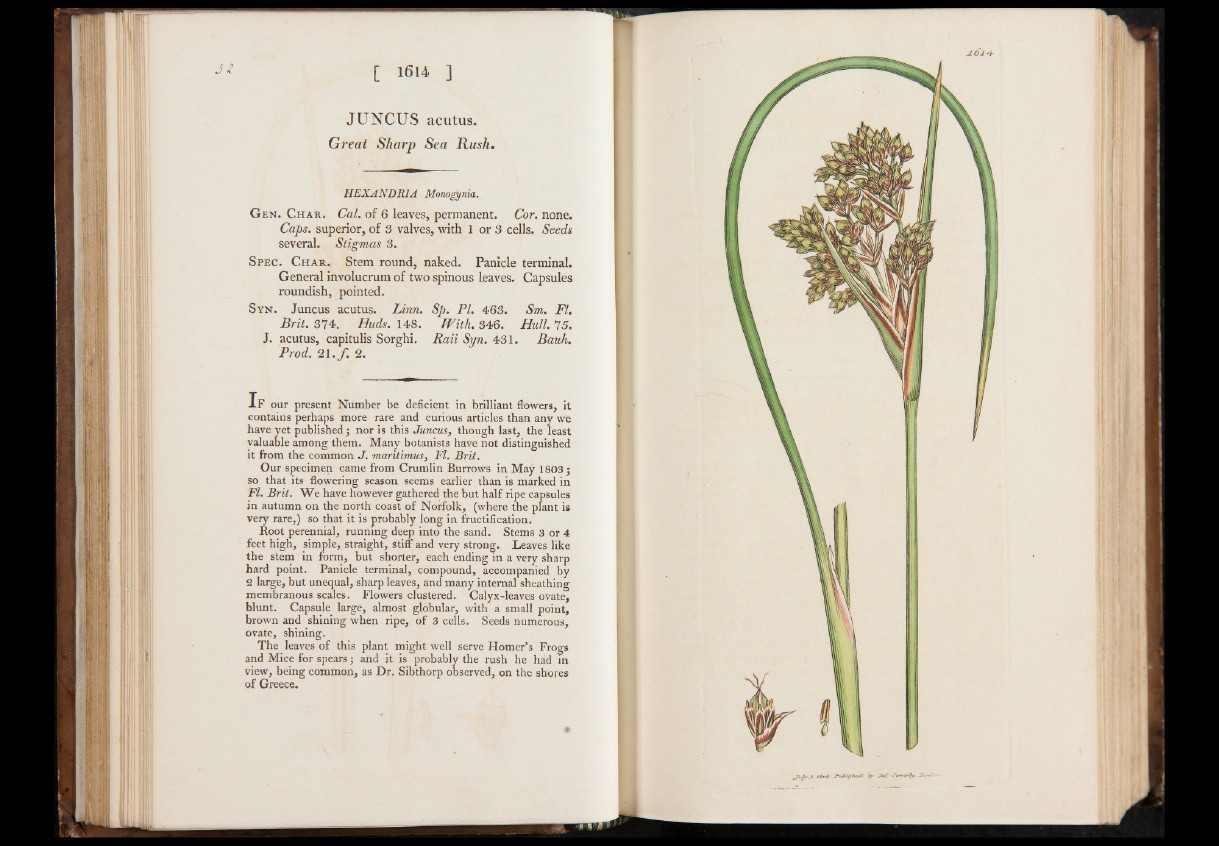
3 t [ 1 6 1 4 ]
JUNCUS acutus.
Great Sharp Sea Rush.
HEXANDR1A Monogynia.
Gen. Char. Cal. of 6 leaves, permanent. Cor. none.
Caps, superior, of 3 valves, with 1 or 3 cells. Seeds
several. Stigmas 3.
Spec. Char. Stem round, naked. Panicle terminal.
General involucrum of two spinous leaves. Capsules
roundish, pointed.
Syn. Juncus acutus. Linn. Sp. P I. 463. Sm. F I.
B r it. 374. Huds. 148. With. 346. Hull. 7 5.
J. acutus, capitulis Sorghi. R a ii Syn. 431. Bauh.
P ro d. 2 1 . / . 2.
I f our present Number be deficient in brilliant flowers, it
contains perhaps more rare and curious articles than any we
have yet published; nor is this Juncus, though last, the least
valuable among them. Many botanists have not distinguished
it from the common J. maritimus, FI. Brit.
Our specimen came from Crumlin Burrows in May 1803 ;
so that its flowering season seems earlier than is marked in.
FI. Brit. We have however gathered the but half ripe capsules
in autumn on the north coast of Norfolk, (where the plant is
very rare,) so that it is probably long in fructification.
Root perennial, running deep into the sand. Stems 3 or 4
feet high, simple, straight, stiff and very strong. Leaves like
the stem in form, but shorter, each ending in a very sharp
hard point. Panicle terminal, compound, accompanied by
2 large, but unequal, sharp leaves, and many internal sheathing
membranous scales. Flowers clustered. Calyx-leaves ovate,
blunt. Capsule large, almost globular, with a small point,
brown and shining when ripe, of 3 cells. Seeds numerous,
ovate, shining.
The leaves of this plant might well serve Homer’s Frogs
and Mice for spears; and it is probably the rush he had in
view, being common, as Dr. Sibthorp observed, on the shores
of Greece.